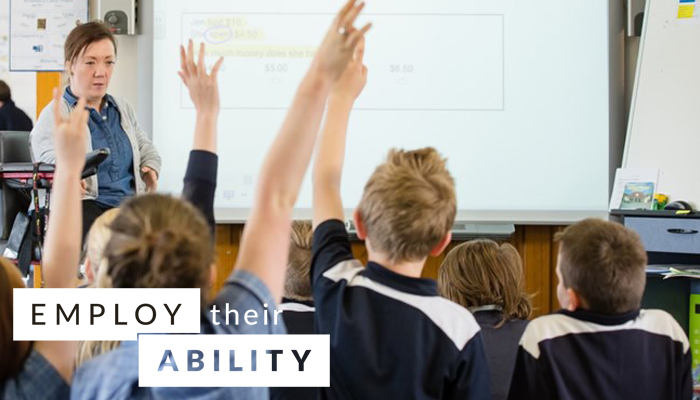Learning about disability employment
Meet Alison, Vice Principal and Literary Coach at Department of Education in Tasmania
Alison Venter worked with a teacher who injured himself and ended up on crutches. He was concerned about how the students would react – but he didn’t need to be.
“I told him to just wait and see how they’d respond and I think he was surprised. They were opening doors and moving chairs – it’s normal to them now,” says Alison.
Alison is a teacher of 18 years, and a vice principal working in Tasmania. She lives with disability – and she uses a wheelchair to help with her mobility.
Employers in the Education sector are amongst the most open to hiring people with disability – which is true of Alison’s experience, too.
“I’m lucky my employers want to work with me to make the school as functional as possible. Usually schools are already pretty accessible, so management want to know what’s going to make a difference and allow me to use the space easily,” says Alison.
There have, of course, been challenges – but through open communication, nothing is insurmountable. One example is when a school Alison worked at was building a new campus, and an architect was determined not to include a ramp into one of the classrooms.
“Luckily I had the support of the school. We had to make it clear that it’s not just about me – putting in a ramp is going to benefit a whole range of people, students, staff and parents who might already be at the school, or might come in the future.”
Making your workplace more accessible for staff isn’t just for one person - it’s for the entire community who uses that space. For employers looking to make adjustments for employees with disability, the Employment Assistance Fund is available for free assessments and to help with financing necessary changes.
Whenever Alison starts at a new school, she makes an effort to go around to each classroom and introduce herself, and let students know that they can ask any questions they might have.
“I tell all the students that I might look different, but I’m this old – they’ll think I’m young because they see my size and equate that with age. I tell them that I welcome their questions, but I might not want to answer everything – and that’s okay,” she says.
“It has been the same at every school. I’ll tell them that everyone needs a bit of help with something– it’s about teaching them that everyone’s different in their own way and not to make assumptions. The kids have always been fantastic.”
Being open to hiring people with disability is just the beginning. When employers make the decision to take the next step, they aren’t in it alone. Find out more about the support available through JobAccess.
Last updated:

